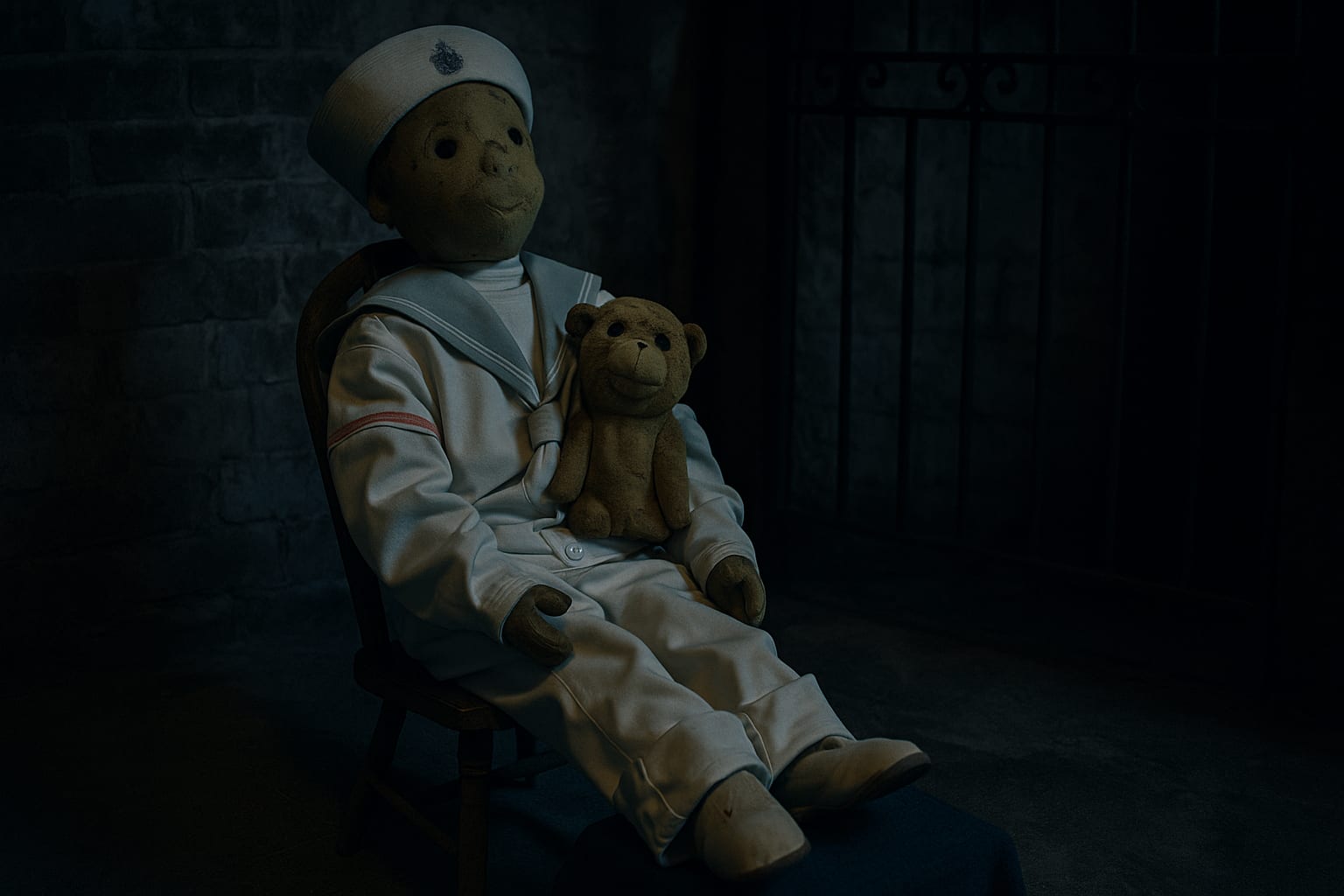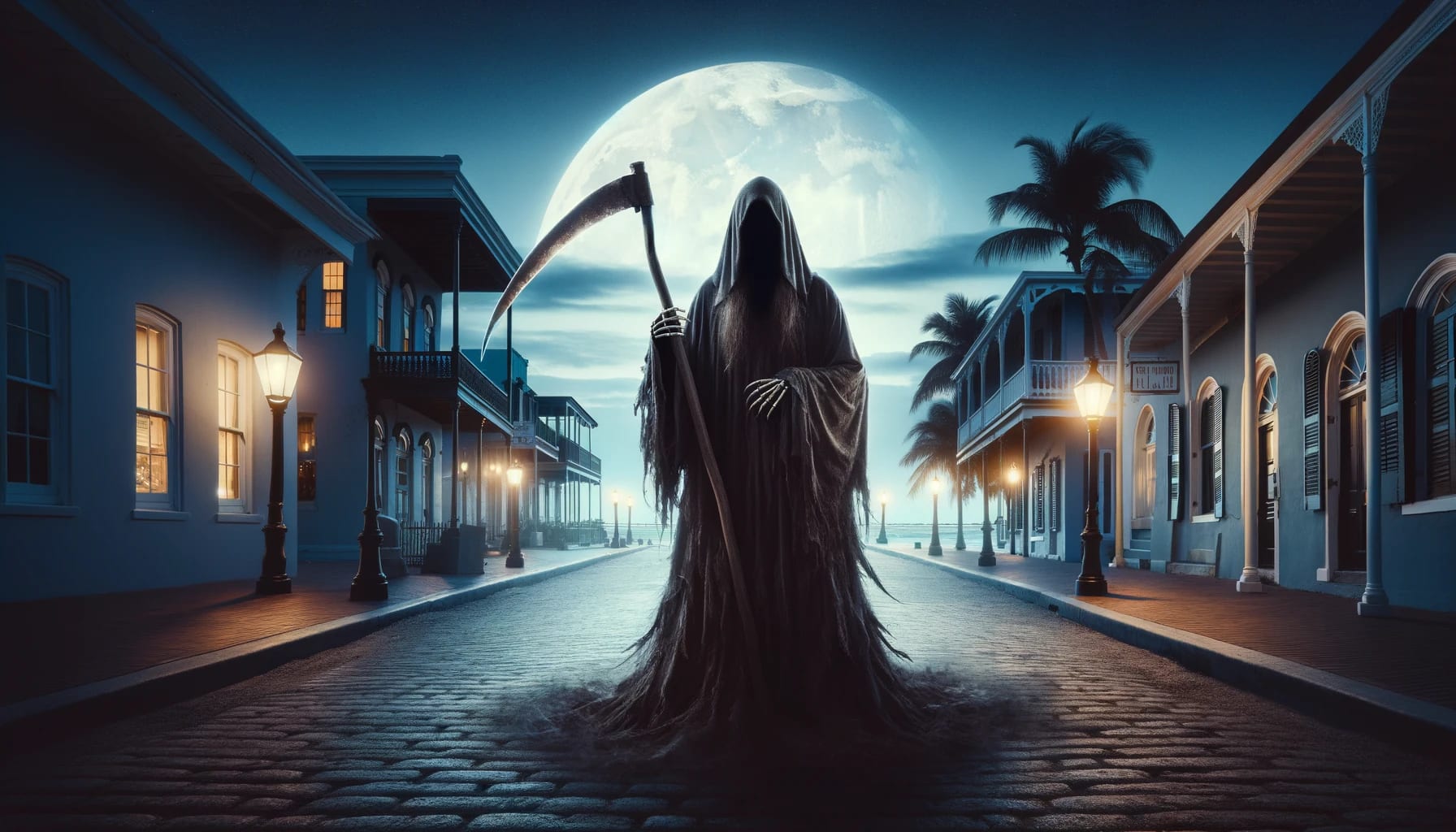Discover the chilling story of Robert the Doll, one of the world's most haunted objects. From childhood companion to cursed artifact, Robert's tale continues to terrify visitors at the Fort East Martello Museum.
A real-life Chucky? Or something even more terrifying? Meet Robert the Doll, one of the most infamous haunted objects in the world—and arguably Key West's most famous supernatural attraction. Since the early 1900s, Robert has been blamed for countless cases of bad luck, accidents, and even personal tragedies. His legend has drawn paranormal enthusiasts from across the globe to witness him for themselves.
But beware—mess with Robert, and your life might never be the same. Whether you believe in the paranormal or not, one thing is certain: Robert the Doll isn't just a creepy toy—he's the centerpiece of one of America's most chilling ghost stories.
Did You Know?
- Robert the Doll is a one-of-a-kind creation by the Steiff Company of Germany, the same company that invented the teddy bear.
- The sailor suit Robert wears isn't original to the doll—it actually belonged to Robert Eugene Otto, the boy who owned him.
- Robert the Doll inspired the 1988 slasher film Child's Play and the character of Chucky.
- Our Key West Ghost Tours don't see Robert the Doll due to him being in a private facility
What Does Robert the Doll Look Like?
Standing about 40 inches tall, Robert was originally designed as a window display mannequin—not a children's toy. Made of fabric and stuffed with wood wool (straw), his weathered appearance has only made his legend more unsettling over time.
Robert's face is worn and featureless, with beady black button eyes and a disturbing, expressionless smile. He holds a stuffed toy dog, whose cheerful appearance makes Robert's presence feel even more sinister. While once intended to be a harmless display, his unsettling features now fuel nightmares for thousands.
Robert's Curse: Fact or Folklore?
Today, Robert the Doll resides at the Fort East Martello Museum in Key West, Florida. Visitors come from all over the world to see him—but they are warned: you must ask permission before taking his photo. Legend says that those who ignore this rule often suffer terrible misfortune.
Above Robert's display, you'll find warning signs. But the most haunting feature may be the wall surrounding him—covered with apology letters from people begging Robert to lift their curses. Letters from around the world describe personal tragedies: broken relationships, accidents, lost jobs, illnesses, and worse—all allegedly caused by disrespecting Robert.
One letter reads:
"Sorry I did not ask 'out loud' to take your photo. Since then, my husband lost his diamond out of his ring. I tore my rotator cuff + my daughter's wedding was canceled. All happened before I returned home. Please stop the curse. I am truly sorry + life is hard enough!"
How Did Robert the Doll Become Haunted?
Origins Shrouded in Mystery
The exact origins of Robert are disputed. One version claims that Robert was a gift to young Robert Eugene "Gene" Otto from his grandfather, who purchased the doll in Germany. Another darker version suggests Robert was given to Gene by a Bahamian servant skilled in voodoo, as revenge against the Otto family for mistreatment.
Some believe both stories hold truth—that the doll was an innocent gift, later cursed by the wronged servant. Whatever the true origin, one fact is certain: Robert was never meant to be a child's toy.
Robert Comes to Life
Soon after Robert arrived, strange occurrences began. Gene would speak to the doll, and unsettlingly, family members reported hearing a second, unfamiliar voice responding.
Gene became obsessed with Robert, treating him as if he were alive. Neighbors claimed to see Robert moving from window to window, seemingly on his own.
At night, the Otto household was often disturbed by Gene's terrified screams. His parents would rush in to find overturned furniture, broken toys, and a trembling Gene, blaming it all on Robert.
Terror in the Otto House
It wasn't just Gene experiencing strange phenomena. Visitors reported hearing childlike giggles, and the family often heard footsteps throughout the house when no one else was home.
One passerby even swore they saw Robert moving on his own inside the house. Over time, the doll's dark reputation only grew.
Robert's Return
After studying art in New York, Chicago, and Paris, Gene married and returned to Key West in 1930, bringing Robert with him. His wife Annette Parker reportedly disliked the doll, eventually forcing Gene to lock Robert away in the attic.
But that didn't stop the rumors. Schoolchildren swore they saw Robert watching them from the attic window, sometimes disappearing right before their eyes.
Robert's New Owner
When Gene died in 1974, Annette sold the house, now known as The Artist House, to Myrtle Reuter, who discovered Robert hidden in the attic. Despite hearing strange noises and experiencing strange activity, Myrtle lived with Robert for 20 years before donating him to the museum in 1994.
The Museum Years and Rise to Fame
Once on display at the Fort East Martello Museum, Robert's paranormal activity reportedly intensified. Cameras malfunctioned, electronics failed, and visitors reported feeling nauseous or light-headed near him.
Over the years, Robert's legend has gone global. He receives thousands of letters, gifts, and even fan art. Some have even sent him illegal substances, prompting the museum to remind visitors that, despite Robert's legend, he is still a museum artifact.
Robert's fanbase extends to social media, where the museum shares updates and stories, keeping his legend alive for those who can't visit in person.
Planning Your Visit
If you find yourself in Key West, a visit to Robert the Doll is a must. But remember—be respectful, and always ask for permission before taking a photo. You don't want to end up writing one of those apology letters.
Know Before You Go
Fort East Martello Museum
3501 S Roosevelt Blvd, Key West, FL 33040
Open daily to the public. In addition to Robert, the museum features Civil War relics, Key West history exhibits, and more.
For hours, tickets, and more information, visit their official site.


